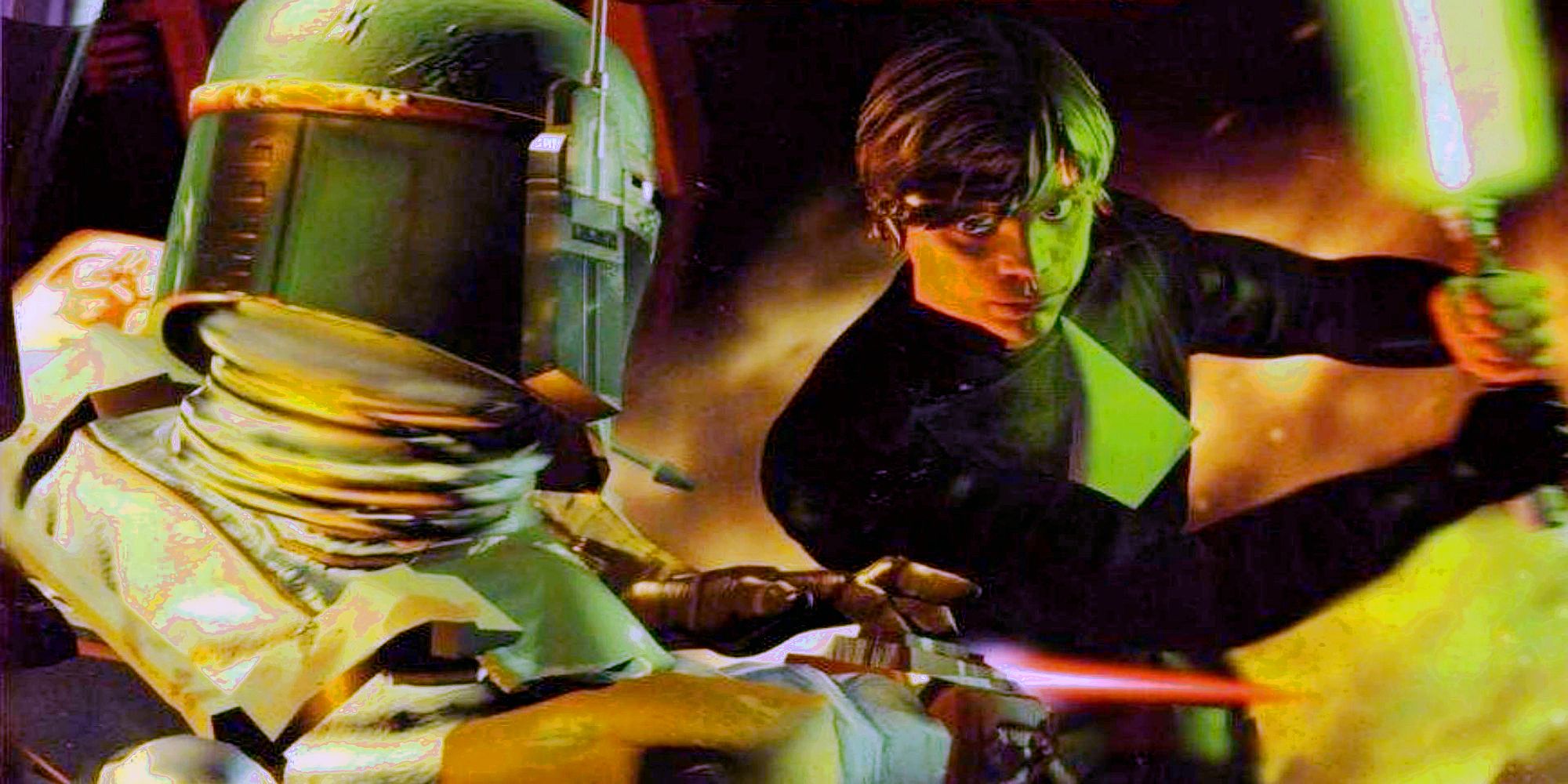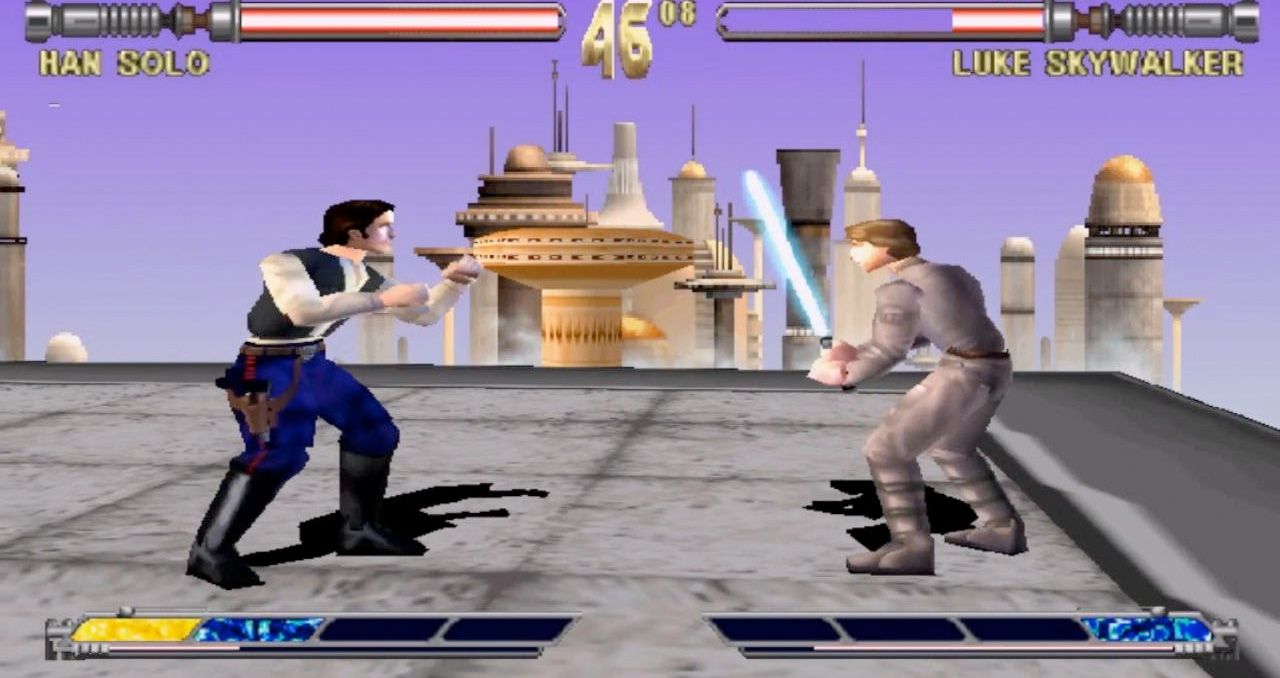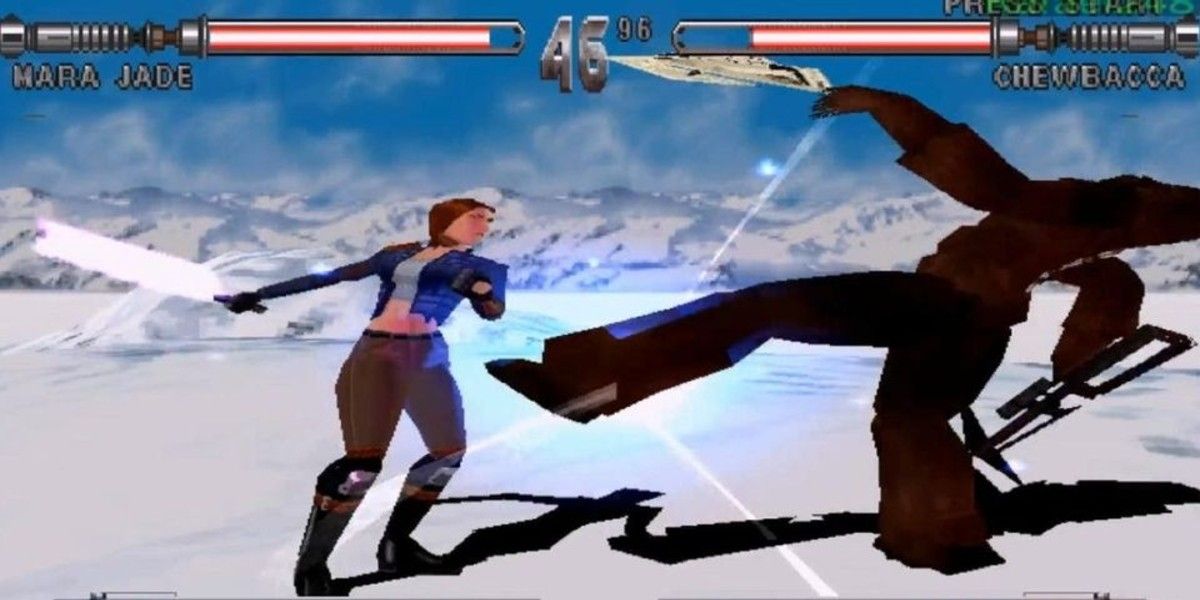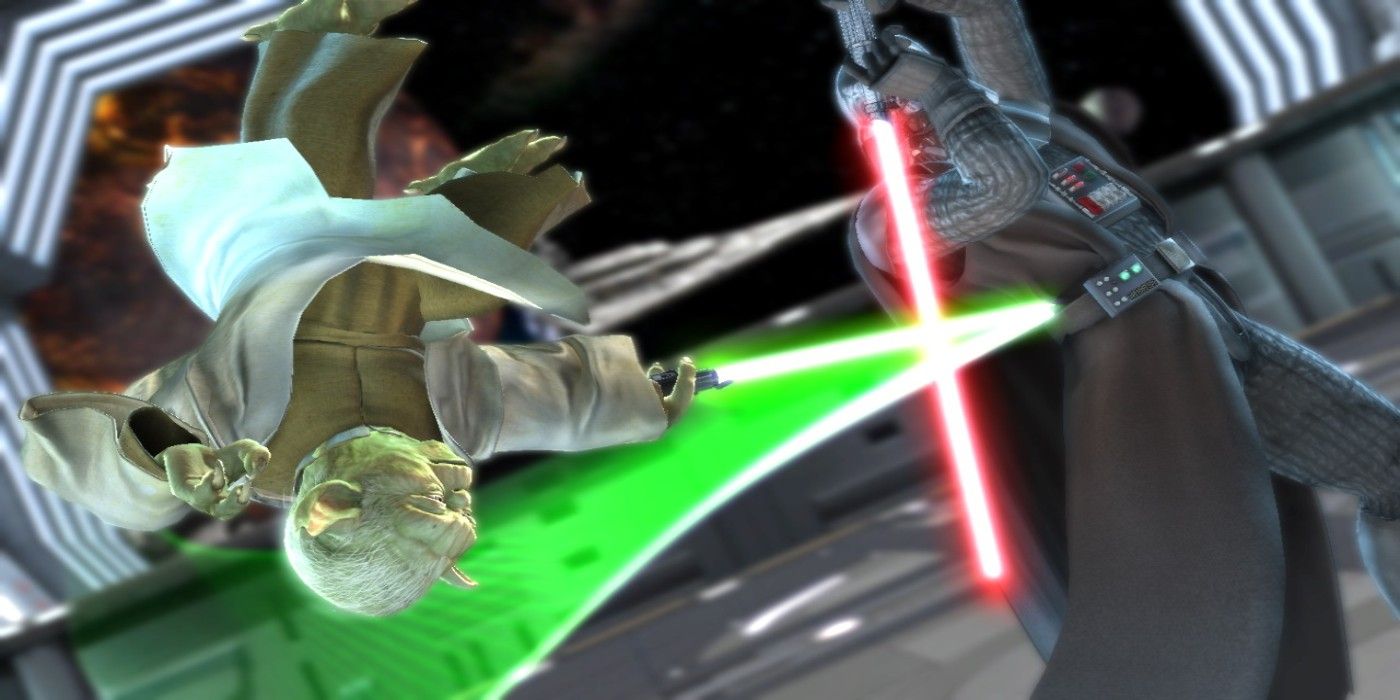Disney taking over Star Wars from George Lucas changed the nature of canon for the franchise. Stories from the Extended Universe were deemed out of continuity, but some elements (such as Star Wars Rebels antagonist Grand Admiral Thrawn) could be folded into future projects. A more obscure element of the EU becoming canon came via an aside in Solo: A Star Wars Story.
When Qi'ra's cover is blown during a heist on Kessel, she found herself locked in a room with an administrator. Qi'ra manages to fight her way out and states that Dryden Voss trained her in an obscure Star Wars fighting style - Teräs Käsi - enabling her to escape.
Teräs Käsi was first mentioned in Steve Perry's 1996 novel Shadows of the Empire. Both words of the phrase are taken from Finnish and translate to "steel hand." While Teräs Käsi first appeared in print, the fighting style is more closely tied to a video game.
Masters of Teräs Käsi was a 3D fighting game developed by LucasArts for the PlayStation and was the studio's first fighting game. The titular master was a character named Arden Lyn, who was recruited by Emperor Palpatine to take revenge on the Rebel Leaders responsible for destroying the Death Star. Like most fighting games, that premise is merely a justification for one-on-one fights between the game's cast. It featured familiar characters from the films, extended universe characters like the beloved Mara Jade, and characters created specifically for the game like Lyn herself.
The game differentiated itself somewhat from 3D fighters at the time in the way it handled combat. With the exception of Lyn and Gamorrean guard Thok, all of the characters could switch between armed and unarmed combat on the fly. The control scheme for the PlayStation's face buttons changed depending on which style you used. Instead of the Force being explicitly for Jedi, every character had a Force meter, which increased the damage their special moves could do.
The game was considered a sales success but received mixed reviews at best. Positive reviews praised the game for its graphics and use of the Star Wars license. Its sluggish movement was a consistent criticism, and the game's reputation has not improved over time. It's been called the worst Star Wars game ever made and used as an example of Star Wars at its absolute lowest point. It even received the ultimate indignity of being panned on an episode of Angry Video Game Nerd.
Despite the game selling well during the holiday season, it didn't receive a sequel. In the book Rogue Leaders: The Story of LucasArts, author Rob Smith singled the game out as an example that "simply attaching the Star Wars name to a game wasn't enough."
LucasArts would never develop another fighting game, though they did publish the Wii exclusive Star Wars: The Clone Wars - Light Saber Duels, developed by Krome Studios, in 2008. It received reviews in the same fair to middling range as Masters of Teräs Käsi. That same year Yoda, Darth Vader and Vader's apprentice Starkiller were guest characters in Soul Calibur IV. Yoda and Vader were initially platform-specific characters for the Xbox 360 and PS3, respectively, before being made available as paid DLC.
Star Wars hasn't been involved in the fighting game genre since 2008. With EA holding the Star Wars license for console and PC games, it seems unlikely to change unless there are some truly bizarre guest appearances in a UFC game. Masters of Teräs Käsi remains a footnote in Star Wars history, despite part of it being canon.




